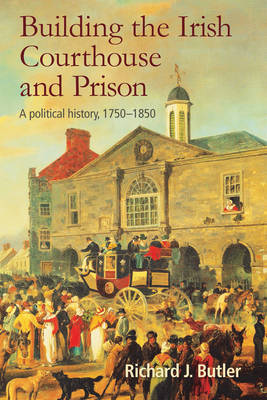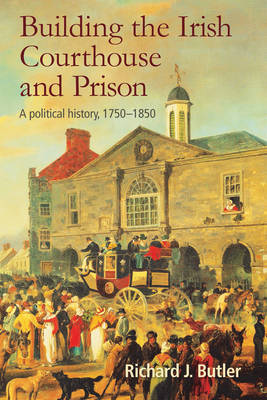
- Afhalen na 1 uur in een winkel met voorraad
- Gratis thuislevering in België vanaf € 30
- Ruim aanbod met 7 miljoen producten
- Afhalen na 1 uur in een winkel met voorraad
- Gratis thuislevering in België vanaf € 30
- Ruim aanbod met 7 miljoen producten
Zoeken
Building the Irish Courthouse and Prison
A Political History, 1750-1850
Richard Butler
Hardcover | Engels
€ 68,95
+ 137 punten
Omschrijving
This book is the first national history of the building of some of Ireland's most important historic public buildings. Focusing on the former assize courthouses and county gaols, it tells a political history of how they were built, who paid for them, and the effects they had on urban development in Ireland. Using extensive archival sources, it delves in unprecedented detail into the politics and personalities of county grand jurors, Protestant landed society, government prison inspectors, charities, architects, and engineers, who together oversaw a wave of courthouse and prison construction in Ireland in an era of turbulent domestic and international change. It investigates the extent to which these buildings can be seen as the legacy of the British or imperial state, especially after the Act of Union, and thus contributes to ongoing debates within post-colonial studies regarding the built environment. Richly illustrated with over 300 historic drawings, photographs and maps, this book analyses how and why these historic buildings came to exist. It discusses crime, violence and political and agrarian unrest in Ireland during the years when Protestant elites commissioned such extensive new public architecture. The book will be of interest to academic and popular audiences curious to learn more about Irish politics, culture, society and especially its rich architectural heritage.
Specificaties
Betrokkenen
- Auteur(s):
- Uitgeverij:
Inhoud
- Aantal bladzijden:
- 652
- Taal:
- Engels
Eigenschappen
- Productcode (EAN):
- 9781782053699
- Verschijningsdatum:
- 29/05/2020
- Uitvoering:
- Hardcover
- Formaat:
- Genaaid
- Afmetingen:
- 201 mm x 251 mm
- Gewicht:
- 2086 g

Alleen bij Standaard Boekhandel
+ 137 punten op je klantenkaart van Standaard Boekhandel
Beoordelingen
We publiceren alleen reviews die voldoen aan de voorwaarden voor reviews. Bekijk onze voorwaarden voor reviews.











